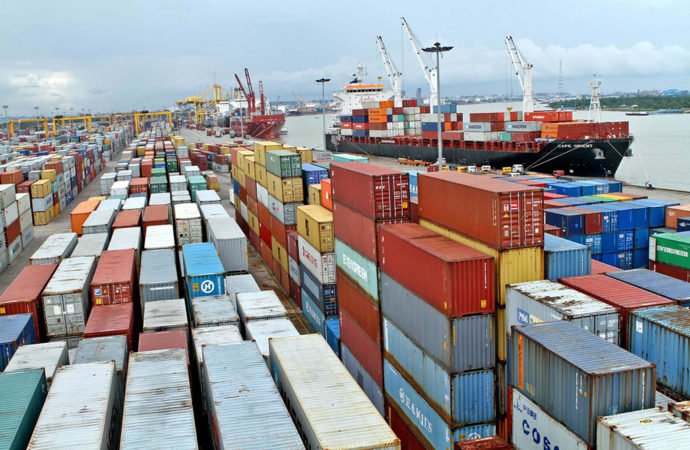Published in Dhaka Tribune on February 06, 2018

Photo: Dhaka Tribune
Bangladesh’s export earnings rose by 6.55% to $21.32b in the first seven months of the current fiscal year, with the apparel industry contributing to most of the earnings.
However, the apparel exporters expressed dissatisfaction as earnings did not reach the expected figures and profit margins narrowed due to rise in production costs.
According to Export Promotion Bureau (EPB) data released on Tuesday, during the July-January period of FY2017-18, Bangladesh earned $21.32b, which is 6.55% higher compared to $20b in the same period in FY2016-17.
During this period, the RMG sector, which comprises over 83% of total exports, earned $17.65b, 7.57% up compared to $16.41b in the same period last year.
Knitwear products earned $8.9b, a 10.5% rise, and woven garment products earned $8.75b, a 4.74% rise, compared to $8.06b and $8.35b respectively in the corresponding period last year.
In January, export earnings rose by 3.54% to $3.4b, which was $3.29b in January 2017. The figure is 2.55% less compared to the $3.5b target set for the month.
Exporters Association of Bangladesh (EAB) President Abdus Salam Murshedy told the Dhaka Tribune: “Though Bangladesh export earnings are showing an uptrend, we are not satisfied with the growth as it is below expectation. In reaching the $60b total earnings target by 2021, the government should concentrate on product diversification measures”.
Despite the export growth, the profit margin is decreasing day by day due to the rise in production costs, said Salam, who was a former president of Bangladesh Garment Manufacturers and Exporters Association (BGMEA).
In this regard, the government should provide utility services including gas, electricity and water at a discounted rate for the export oriented industry, he added and demanded quick implementation of Special Economic Zones to attract more investment.
AB Mirza Azizul Islam, former advisor to caretaker government, told the Dhaka Tribune: “With the current export growth rate of RMG sector, it is not possible to earn $50b by 2021”.
On the other hand, there are challenges ahead after the Brexit and Bangladesh’s graduation to middle income country from the LDC. Bangladesh will lose trade benefits under the Generalised System of Preferences (GSP), said Islam.
In remaining competitive in the global export market, Bangladesh has to form a strategy to avail the trade facilities from developed countries, he added.
Azizul Islam, also an economist, further added that investment from home and abroad should be increased to raise the production capacity of export oriented manufacturing.
Among the major sectors, export earnings from frozen and live fish stood at $354m, agricultural products at $360m, pharmaceuticals at $60m, jute and jute products at $661m, specialized textile at $60m, home textiles at $501m, furniture at $32m, and non-leather footwear at $150m.
On the other hand, earnings from plastic goods decreased by 25.67% to $56m, leather and leather goods fell by 4.61% to $709m and raw jute by nearly 17.51% to $95.51m.
 CPD RMG Study Stitching a better future for Bangladesh
CPD RMG Study Stitching a better future for Bangladesh



